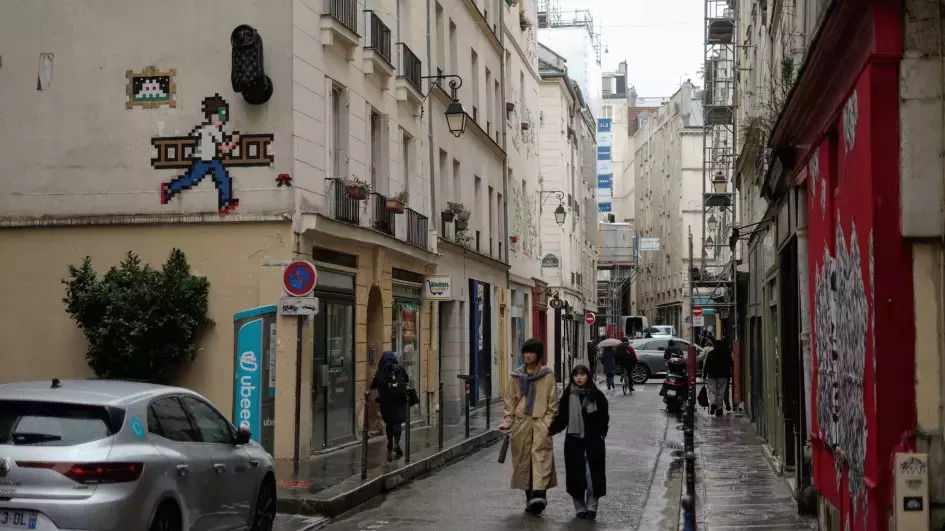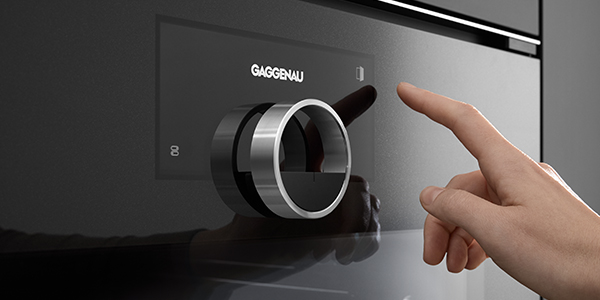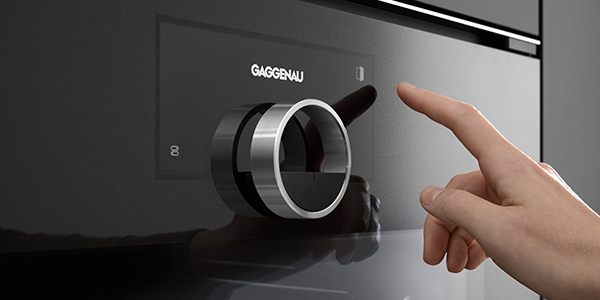For the Olympics a mysterious artist called “Invader” has cemented artworks to walls across France’s capital, as well as around the world, even having some carried aloft to the International Space Station.
Vincent Giraud, one of the artist’s avid fans in Paris, is already deeply engaged in the game. He’s become a dedicated player of Invader’s addictive mobile phone game, “Flash Invaders,” which rewards users with points for discovering and photographing the colorful and quirky pieces of pixelated art.
Giraud quickly became hooked and has already located 1,565 of these mosaics in just a year, amassing so many points that he’s soared into the top 1,000 on the leaderboard, among more than 360,000 players.
“In a few months, I found and photographed all those in Paris,” says Giraud, who goes by the game-name Vince-Vader. Hunting for Invader mosaics, scanning walls, pavements, bridges, and even the Eiffel Tower for them, has become “another way of discovering the city.”
In essence, when Olympic visitors flood Paris for the July 26 – Aug. 11 Games, they’ll be stepping onto the turf of France’s most international, invasive, and intriguing contemporary street artist. It will be one invasion meeting another.
Similar to Banksy, the British street artist he’s occasionally compared to, Invader remains elusive, fiercely guarding his anonymity and operating on the fringes of legality. He arrives, adheres his mosaics, and vanishes into the night, leaving behind his signature pixelated artworks primarily crafted from small ceramic and glass tiles. Many resemble the aliens from the Space Invaders arcade game, while others are intricately detailed, depicting still lifes of fruit or, in New York, portraits of Lou Reed and Andy Warhol. Some pay homage to pop culture icons like Spiderman, Star Wars, Bugs Bunny, Ninja Turtles, and pizza. Others suggest thorough research, such as a portrait of guitarist Django Reinhardt facing the house where he once lived, south of Paris in Samois-sur-Seine.
Since the installation of the first cataloged mosaic, a blue Space Invader known as PA_01, on a Paris street in 1998, Invader has spread his art across the globe. There are now over 4,000 of his mosaics in cities and towns on every continent except Antarctica.
The invasion began in 1999 with London, Tokyo, Los Angeles, and other cities; continued in 2000 with New York, Geneva, and more; reached Hong Kong in 2001; Berlin, Bangkok, Melbourne, and beyond. The 4,000th mosaic was affixed to a brick wall in Potosi, situated 4,000 meters (13,100 feet) up in the Bolivian Andes, in 2021. The European Space Agency installed Invader’s Space2 mosaic aboard the International Space Station in 2015.
In Paris — by far his most invaded location — the artist’s footprint is larger than ever as the Olympics loom.
A new exhibition in a disused multi-story building has one of his pixelations painted on its roof, visible via satellite on Google Maps. With a telescope, the show’s visitors can also peer across the grey roofs of Paris to Invader’s latest milestone: his 1,500th mosaic in the Olympic host city and its suburbs.
PA_1500 was unveiled in February on an exterior chimney of the Pompidou Center, Paris’ foremost contemporary art museum. Unlike for the bulk of his works which he installs guerrilla-style without asking, Invader sought and got the museum’s permission to cement the red-and-white Space Invader -type alien into place overlooking the city.











